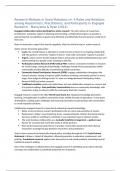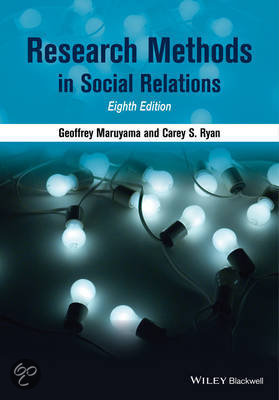Samenvatting
Samenvatting literatuur hoorcollege 5 Onderzoeksmethodologie UvA
- Instelling
- Universiteit Van Amsterdam (UvA)
Samenvatting van de literatuur die we moeten lezen voor hoorcollege 5 van Onderzoeksmethodologie. Research Methods in Social Relations H4 en H6 – G. Maruyama & C.S. Ryan
[Meer zien]





